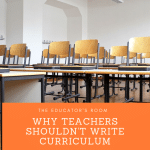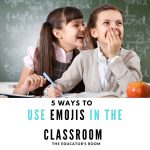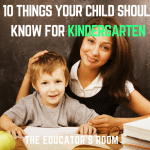 Dictionary.com defines integration as: “an act or instance of combining into an integral whole.” Schools across the nation are using this idea to purposefully combine curriculum and standards in meaningful ways for student learning. Just like making a recipe or putting together a puzzle, you must combine different pieces of your curriculum, disciplines, concepts and skills under an essential question, theme, or unit. There are simple steps you can work through to create integrated units for your classroom, grade level, or school. The process works best with a group because as Vince Lombardi said, “Individual commitment to a group effort–that is what makes a team work, a company work, a society work, a civilization work.”
Dictionary.com defines integration as: “an act or instance of combining into an integral whole.” Schools across the nation are using this idea to purposefully combine curriculum and standards in meaningful ways for student learning. Just like making a recipe or putting together a puzzle, you must combine different pieces of your curriculum, disciplines, concepts and skills under an essential question, theme, or unit. There are simple steps you can work through to create integrated units for your classroom, grade level, or school. The process works best with a group because as Vince Lombardi said, “Individual commitment to a group effort–that is what makes a team work, a company work, a society work, a civilization work.”
The Kansas State Department of Education hosted three academies this summer. Teachers across the state learned about resources and strategies for implementing new curriculum in mathematics, science, social studies, and language arts. Each content area had two days devoted to their curriculum. On the third day, teachers were placed in multidisciplinary groups and worked on answering the question “How do you solve world hunger?” Groups could change the question to fit their needs, but many groups found worth and curriculum connections under this questions. Discussion, thinking and sharing began as groups talked about their own standards in each area. Connections were made and activities developed that will bring meaning into classrooms across the state in the fall.
This process can be recreated in any school system or grade level. You will not have 100% buy in. You will have teachers that don’t see the point, don’t want to do the work, are scared to share and are not on board. But developing a unit that allows students to connect their learning will have amazing results.
Start with an essential question. Essential questions are open-ended, big idea questions that are well written, vital, that touch our hearts and souls and are vital to our lives. Essential questions can be used with units, in classroom, by grade levels and within entire buildings to provoke inquiry and probe deeper thinking among students. If you are new to essential questions you can watch a short video clip here.
Using your essential question as a connecting idea, each teacher or content area then lists all disciplines your students will use during the school year. You can break your essential question into semester or quarters for better management. Under those disciplines brainstorm guiding questions. Guiding questions direct the search for understanding. These questions will focus the students under each discipline. They will become the guide for each classroom or subject area to tie their skills, standards, and curriculum. Guiding questions allow teachers to focus their content, lessons and activities towards the essential question while meeting their standards and objectives. Using this system students will naturally begin to make connections among their classes and the information they are being presented, strengthening learning.
The next step involves your standards and units. List resources you have, text sets, experts and what you want students to know. Think about what you are doing that works. Do you have a novel that connects? Is there a project you have done in the past? What technology supports this essential question? Gather what you need. Use your resources and technology to find primary source documents, literature, poetry, etc. You may need to find more resources or you may have enough in your teaching files. Whatever you are doing should be focused around the guiding question which links back to the essential question.
Throughout the year, as you implement this integrated unit, remember to reflect and have conversations about what is going on in all classrooms. You will find students are making their own connections and using the math concepts they are learning to apply and solve a problem in science. They understanding literature and poetry because of the background knowledge they are learning in social studies. Allow students time to reflect as well and share the connections they see. This process will heighten the learning in your classroom. And remember to have fun and all things in life are connected.
For more information on integrated curriculum check out this resource from ASCD.







Leave a comment